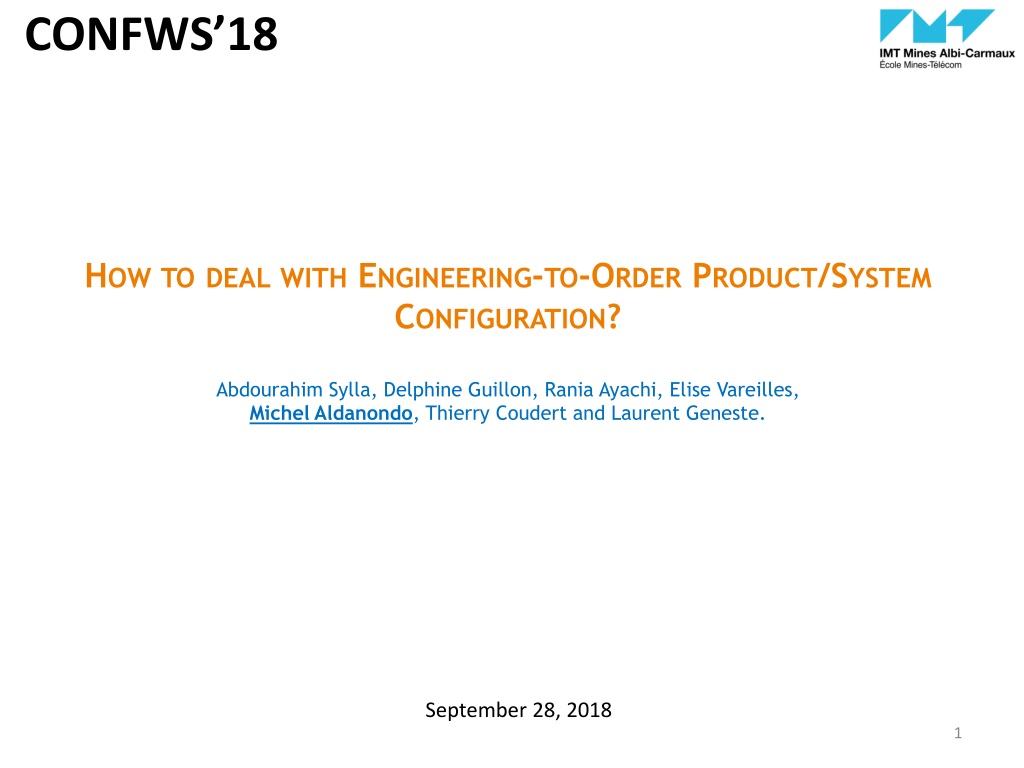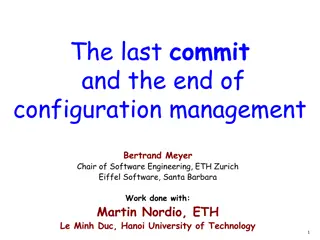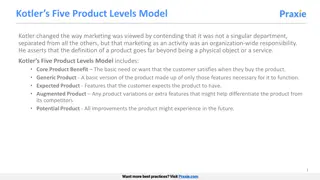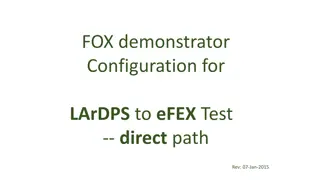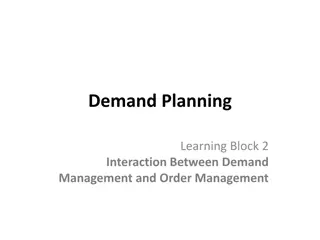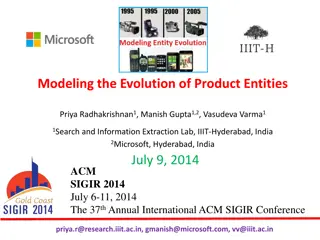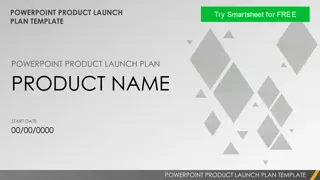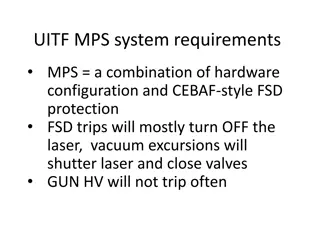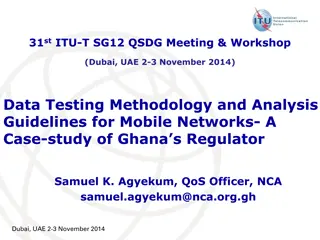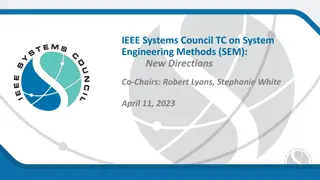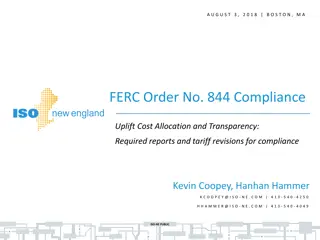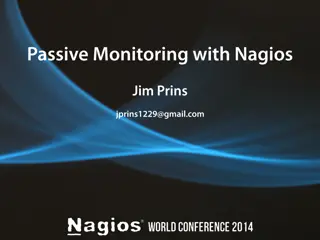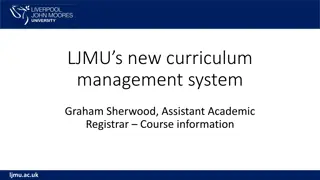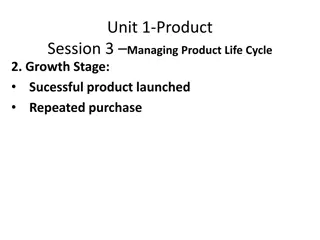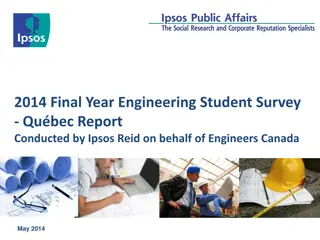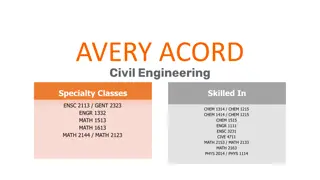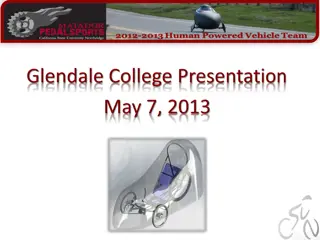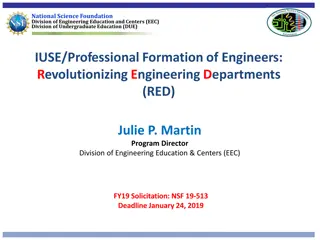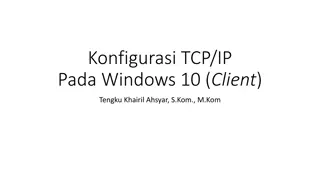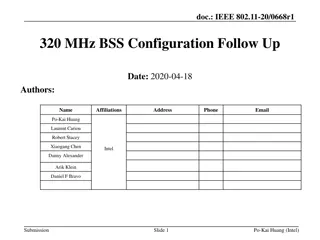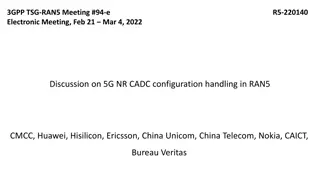Engineering-To-Order Product/System Configuration Strategies
Strategies for dealing with engineering-to-order product/system configuration including assemble-to-order, make-to-order, configure-to-order, and engineer-to-order approaches. Highlights different levels of diversity, challenges, and solutions in personalized system configurations.
Download Presentation

Please find below an Image/Link to download the presentation.
The content on the website is provided AS IS for your information and personal use only. It may not be sold, licensed, or shared on other websites without obtaining consent from the author. Download presentation by click this link. If you encounter any issues during the download, it is possible that the publisher has removed the file from their server.
E N D
Presentation Transcript
CONFWS18 HOW TO DEAL WITH ENGINEERING-TO-ORDER PRODUCT/SYSTEM CONFIGURATION? Abdourahim Sylla, Delphine Guillon, Rania Ayachi, Elise Vareilles, Michel Aldanondo, Thierry Coudert and Laurent Geneste. September 28, 2018 1
HOW TO DEAL WITH ENGINEERING-TO-ORDER PRODUCT/SYSTEM CONFIGURATION? BEFORE STARTING .ATO, MTO, CTO .ETO BEFORE STARTING .ATO, MTO, CTO .ETO WHAT HAPPENS WHEN YOU "GIVE YOUR CREDIT CARD ? ATO : assemble to order Cars, computers, kitchens MTO : make to order Stairs, doors, windows, PTO : pick to order Ikea ? FOR THESE SITUATIONS THE DIVERSITY PROPOSED TO THE CUSTOMER HAS BEEN: Identified, Discussed, Validated, and Inputted in the configurator ATO and MTO are frequently gathered in CTO: configure to Order ABSOLUTELY IMPOSSIBLE TO CONFIGURE SOMETHING OUT OF PREVIOUS DIVERSITY DEFINITION: You can only select a crane of 6 or 8 meters but why not 7 or 9 ? It can be possible, but it has never been engineered If you say ok, you have to engineer the requirements and product solutions This is ETO : Engineer To Order TOO BAD TO MISS A BUSINESS BECAUSE OF A SINGLE OUT OF RANGE REQUIREMENT ! THE IDEA, THREE LEVEL OF DIVERSITY OR REQUIREMENTS : Standard CTO Non standard but acceptable ETO Non acceptable out of CTO-ETO diversity ranges Full engineering problem 2
HOW TO DEAL WITH ENGINEERING-TO-ORDER PRODUCT/SYSTEM CONFIGURATION? Agenda Context, research problems and objectives Systems configuration models in CTO Six cases of systems configuration in ETO Extension of configuration models from CTO towards ETO Conclusions and further research 3
HOW TO DEAL WITH ENGINEERING-TO-ORDER PRODUCT/SYSTEM CONFIGURATION? CONTEXT AND RESEARCH PROBLEM ETO demands for personalized system personalized system demands for CTO demands for personalized system PTO ATO MTO System solutions space proposes a system solution proposes a system solution Client Company Supplier Company The problem is the configuration hypothesis state that: - a configured product/system is assembled from predefined or totally designed components/sub-systems - the assembly mode is also predefined - as a consequence, ETO products/systems cannot be configured using the existing configuration models [Montanari1974, Mittal+1986, Aldanondo+2008, Felfernig+2014, Zhang2014] 4
HOW TO DEAL WITH ENGINEERING-TO-ORDER PRODUCT/SYSTEM CONFIGURATION? RESEARCH OBJECTIVES Instantiation Knowledge base Knowledge-based configurator This research focus on the generic model The aim is to extend existing products/systems configuration models towards ETO Identify the cases of systems configuration that differentiate ETO from CTO For each case, to propose CSP-based modelling approach to extend existing configuration models from CTO to ETO 5
HOWTODEALWITH ENGINEERING-TO-ORDER PRODUCT/SYSTEM CONFIGURATION? SYSTEMS CONFIGURATION MODEL IN CTO Crane Generic model of crane system In CTO Crane 1 : Jib 1, Tower 1 4m or 8m Crane 2 : Jib 2, Tower 2 Jib Tower Jib 1 Jib 2 Tower 1 Tower 2 4 meters Stiffness low 8 meters Stiffness strong 8m or 16m Length 4 4 Length Jib Jib 1 Jib 1 Jib 8 Jib 2 Crane Crane 1 Crane 1 Crane Stiffness low low Stiffness CSP model Tour Tour 1 Tower 1 Tower Crane 2 strong System Sub-system properties Tower 2 Sub-systems 6
HOW TO DEAL WITH ENGINEERING-TO-ORDER PRODUCT/SYSTEM CONFIGURATION? LES THE SIX CASES OF SYSTEMS CONFIGURATION IN ETO Crane Crane 1 : Jib 1, Tower 1 Crane 2 : Jib 2, Tower 2 Crane NS : Basket, Jib 1, Tower 1 Crane NS : Jib 1, Tower 2 Crane NS : Jib NS, Tower 2 Jib Tower Basket Jib 1 Jib 2 Tower 1 Tower 2 6 meters 4 meters Stiffness low 8 meters Stiffness strong Jib NS Jib NS Jib NS Specific shape 6 meters 4 meters Stiffness strong Stiffness strong Standard associations Standard integrations Standard property values Standards sub- system instances Standard system solutions Case 1 Case 4 Case 5 Case 2 Non-standards sub- system instances Non-standard system solutions Non-standard property values Case 6 Case 3 Non-standards properties Non-standard Sub-systems 7
HOW TO DEAL WITH ENGINEERING-TO-ORDER PRODUCT/SYSTEM CONFIGURATION? EXTENSION OF EXISTING CONFIGURATION MODELS : CASE 2 AND CASE 5 Length NS 6 meters Stiffness strong Length 4 8 Jib Length ]4,8[ 6 Jib 1 Jib 2 Jib Crane Crane 1 Jib _NS_AV Jib _NS_AV Crane 2 Crane Crane _NS Stiffness low Stiffness strong Crane _NS System Tower Tower 1 Tower Tower 2 strong Sub-system properties Tower 2 Sub-systems Case 2 : addition of non-standard values for the properties Case 5 : Addition of a non-standard sub- system to a system 8
HOW TO DEAL WITH ENGINEERING-TO-ORDER PRODUCT/SYSTEM CONFIGURATION? CONSEQUENCES OF THE PROPOSED APPROACH ON THE SUPPLIER COMPANIES Two major consequences on the supplier companies Identification of system features non-standard crane non-standard become a standard one Length 6 Standard Jib Non-standard acceptable Jib _NS_AV Jib 3 Crane Crane _NS Crane 3 Non-acceptable Stiffness strong Generic model updating Tower Tower 2 Length 4 8 6 Jib Jib 1 Generic model of the crane ]4,8[ 5,7 Jib 2 jib 3 Crane Crane 1 Crane 2 Jib _NS_AV Stiffness low Crane 3 Crane _NS strong Tour Tour 1 System Sub-system properties Tour 2 Sub-systems 9
HOW TO DEAL WITH ENGINEERING-TO-ORDER PRODUCT/SYSTEM CONFIGURATION? CONCLUSION AND FURTHER RESEARCH CONCLUSION : Six cases that differentiate CTO systems configuration from ETO have been identified For each case, a CSP-based modelling approach has been proposed in order to extend the existing models towards ETO Based on that a generic model has been proposed for the configuration of CTO and ETO products/systems. FURTHER RESEARCH : to test the applicability of the proposals on a larger case of systems configuration To extend the configuration of processes relevant to CTO towards ETO To propose a method/scale to measure the distance between an ETO product/system and CTO products/systems. 10
